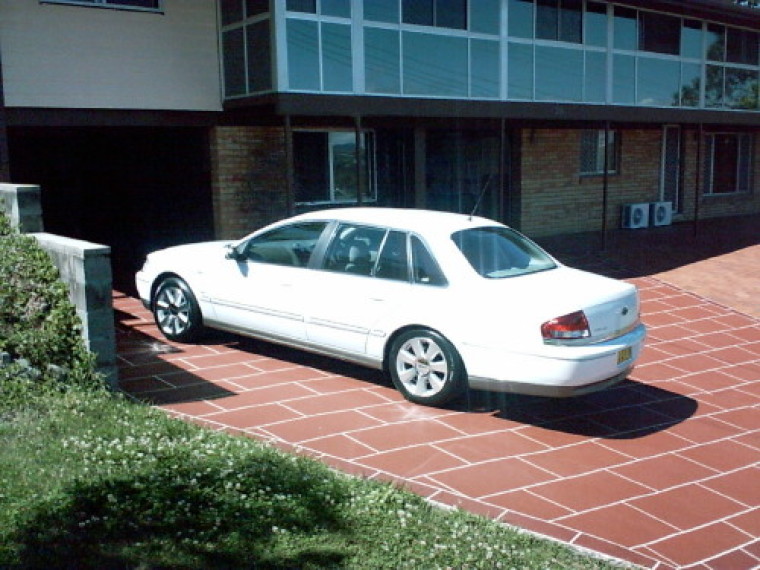
In a recent article from the Sydney Morning Herald and The Age there is now seen to be a growing hue to raise tariffs for imported motor vehicles on the one hand, and a sever cut back or total elimination of Government hand-outs to manufacturers of motor vehicles in Australia. After all Ford Australia was propped up by exactly this factor. (smh.drive.com.au)
The Ford Falcon issue has taken the greatest beating out of all the associated issues with the Ford Australia decision to close up shop with its manufacturing of Ford vehicles in Geelong.
Here are a number of furphies that need to be dispelled in the first instance so as to attempt to get a handle on the issue of the Ford Falcon.
Furphy No 1 - there were not enough motor vehicles being manufactured from the Geelong plant.
The opposite was true – there were too many motor vehicles being manufactured in Geelong.
Furphy No 2 - Ford did not have a policy or a philosophy of exporting.
Again the opposite was true, Ford Australia exported many different kinds of engines, Ford parts and even certain kinds of vehicles.
Furphy No 3 - Ford failed to capitalise on the growing small family car market,
Again that is not the case, Ford Australia is part of a world wide conglomerate of motor vehicle manufacturing. The Ford Focus was an Australian product.
Now that those furphies have been dispelled, the question is repeated as to what was the issue behind the Ford Falcon. These might be categorised as follows and moreover, nothing is ever as simple as it might first sound:
The Issues
First, the Ford Falcon was designed and heralded as a surprisingly 'Australian' car, especially for those a little upmarket. This was in spite of there being a strong importing motor vehicle culture even after Holden and then Ford established their Australian brands of car.
Holden was marketed and sold as the people's car and it was. Many Australians could afford a Holden car and it did the nation proud. Ford came onto the scene as a rival in 1960 with the Ford Falcon and it was a little more expensive, the stream flowing lines were more acute and it presented itself as more the middle-class family vehicle.
Over the next six decades this rivalry between Holden and Ford for the family car market ran neck and neck. But, whereas the Holden was later designed and branded in various guises around the world as the global market place gained significance, Ford had other vehicle types on the international market that filled such gaps.
In other words, the Ford Falcon brand gained a singular reputation by becoming the Australian middle class choice of family vehicle.
Another surprisingly factor which the Ford Falcon in its Australian design was not seen as a strong contender in the export trade was that the American made Ford family vehicles were of a different mode.
The Australian Ford Falcon had a heavier power steering due to the nature of our road systems. Australians opted for a heavier grip on the wheel. Moreover chrome was not a mandatory cosmetic factor in Australia as in America in that era, there was a sense in which plain was beautiful. This fitted the Australian psyche to a 't' particularly as Australians are larger physically, than say Asian peoples.
New Zealand always imported its vehicles in any case so there was a ready but limited export market there, but the taste of the flashier motor vehicle in Asia, a smaller car, was not to the Falcon's liking. GMH Holden on the other hand was able to adjust its slightly smaller Commodore to what be called a 'universal car' and make the necessary changes as required.
The Ford Falcon was a consumer driven home market family vehicle that had found its niche in both the suburbs and at Bathurst and therein was its success and ultimate demise in a global market place where the tastes of Australians are not shared in a very choosy export market place.
I for one drive a Fairlane. I'm the larger man. It's easy to get in and out of. It is comfortable but not excessively opulent. Its engine is a 6 cylinder (same as the Falcon). It has the 6 gear automatic digital whereby along the freeway its fuel consumption per 100ks is way down. For me and my needs in ministry and my tastes, it is ideal. I for one will be sad to see the end of the Falcon line.
The possible replacement for the Falcon, the Ford Taurus, an American built "One Ford" policy motor vehicle was recently seen in Australia. (smh.drive.com.au)
Dr Mark Tronson is a Baptist minister (retired) who served as the Australian cricket team chaplain for 17 years (2000 ret) and established Life After Cricket in 2001. He was recognised by the Olympic Ministry Medal in 2009 presented by Carl Lewis Olympian of the Century. He has written 24 books, and enjoys writing. He is married to Delma, with four adult children and grand-children.
Mark Tronson's archive of articles can be viewed at www.pressserviceinternational.org/mark-tronson.html
